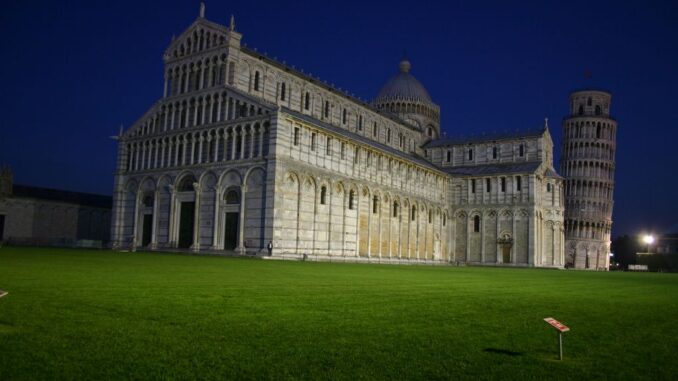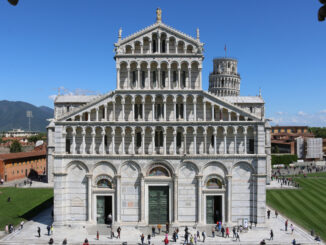
PISA, Italy — So many cities in Italy have towers, but for centuries “La Torre di Pisa” attracted tourists.
Despite the fact that it is somewhat of an engineering blunder, there is something strangely beautiful about the Leaning Tower of Pisa. Throngs of tourists who flock to Pisa to marvel at the tower or to have their picture made at an angle that looks as through they’re holding up the tower agree.
Located at the junction of the rivers Arno and Serchio on the Tyrrhenian Sea in western Tuscany, Pisa is best known to many worldwide for its famed Leaning Tower.
Construction on La Torre di Pisa began in August 1173. At first, the tower did not have a tilt, but once workers completed three floors of the tower that its now-famous lean was noticeable.
That lead to a halt in construction, which lasted for about a century. Even though construction re-stated in 1273, it wasn’t until 1360 that the tower was completed.
According to legend, Pisa native Galileo Galilei dropped two objects with different weights from the top of the tower in an effort to refute Aristotle’s theory of gravity. While this makes for a great story, its accuracy is subject to debate.
Over the years, there have been many attempts to stop the tilting. At one point, officials placed lead weights at the base of the tower, but that did not stop the tower from further leaning.
“The problem is no one really knows why this tower doesn’t fall. From an engineering point of view, it’s an enigma,” the New York Times quoted the tower’s keeper as saying in 1987. At the time, officials were grappling with what actions were needed to save the city’s beloved tower.
The tower may have survived the city’s bombing in World War II, but for a spell it looked as though it might not stand the test of time. In January 1990, the tower was closed to tourists and its bells were eventually removed; officials hoped removing their weight would help.
Nearby apartments were also evacuated as a precaution in case the tower was to topple.
The city didn’t give up on shoring up the tower. Finally, the tower was stabilized enough for tourists to re-enter the tower in December 2001.
When two tourists from Spain were the first to enter the reopened tower, Pisa’s then-Mayor Paolo Fontanelli said the moment was filled with “indescribable emotion” and called the tower’s reopening as “an extraordinary moment for Pisa and Italy, and all of humanity.”
Not to mention the fact that tourists would continue to flock to the city.
The tower was finally stabilized in 2008. That, officials seem to agree, should keep it for another 200 years of visitors.
Still, the tower has a lean, meaning tourists still have the opportunity to take a picture from such an angle that it looks as though they are holding up the tower.
In addition to the tower, Pisa’s Duomo, a beautiful building in its own right. Sadly, it is somewhat of a red-headed stepchild compared to the Leaning Tower.
The Duomo dates to 1063, about 90 years before construction on the Leaning Tower started. Luckily, the entire Piazza del Duomo, which includes the tower, the church and its baptistery, has been listed as a UNESCO World Heritage Site.
Elsewhere in town, Santa Maria della Spina, built in 1230 along the banks of the River Arno, is home to a thorn said to be part of the crown of thorns Jesus wore when he was crucified.





